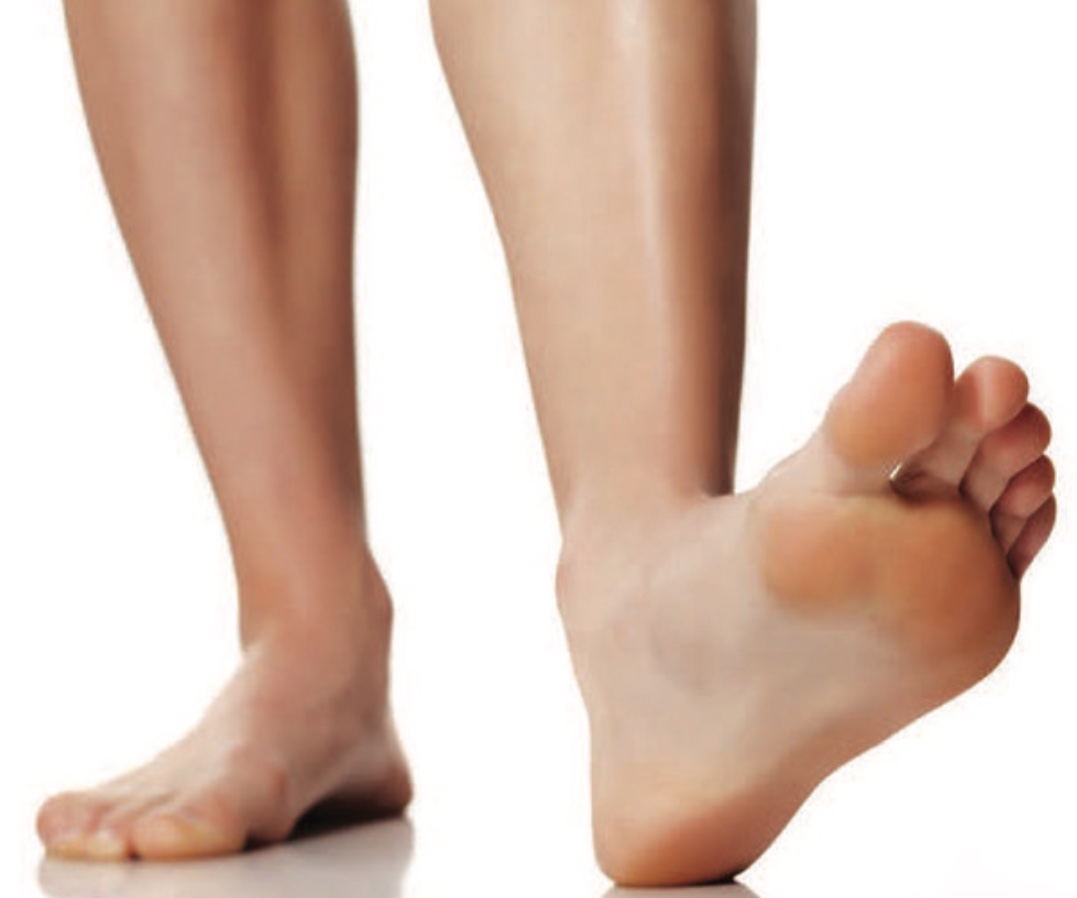Reducing Rotation
You can create length and felt connection through the core line by reducing the lateral rotation of your femur. This creates length in the psoas major and in the hip adductors. The downside can be a ‘catch’ in the groin.
Rotating the femur to a neutral position sets the insertion of the psoas major (lesser trochanter of the femur) to lie closer to the axis of the psoas muscle as it descends from the lumbar vertebrae. This creates incremental slack along this line. If you have a ‘sway’ back, creating length through the psoas major supports tempering of the lordotic curve by allowing the lumbars to reposition posteriorly.
You can also introduce incremental length in the same line by focusing on the hip adductors (e.g. gracilis). There is good empirical evidence that the fascial ‘packaging’ of the adductors speaks directly to the fascial tube within which the psoas major descends. So, by lengthening the adductors we can impact an entire core line up into the diaphragm where elements of the psoas originates. Think of it as a kinetic hand-off traveling along the line of the psoas major, vertically and inferiorly to the lesser trochanter, and meshing with the myofascia of the adductors.
However, reducing lateral rotation can also result in discomfort. Incremental slack in our myofascial ‘net’ requires integration, and fascial adhesions which supported the old design need release.
[Note: When I refer to a fascial webbing, I am extending the contextual framework beyond the anatomical specificity of muscular origins and insertions. Rather I am speaking in terms of a fascial web which seems ubiquitous - a tug on one end of the web creates a specific impact at many other points.]
Hypothesis
This essay results from a friend’s inquiry into ‘groin’ discomfort arising from the reduction of lateral femoral rotation. As ‘groin’ is a general term and gives only a rough location (much like the Austrian ‘foot’), I’ll assume the pain is presenting high on the medial side of the femur.
I’d first suggest investigation with a medical professional to be on the ‘safe’ side as there are many possible sources for this discomfort. For my purposes here, I will investigate this topic from a functional perspective as a practitioner of Structural Integration.
An initial starting point for this inquiry is to hypothesize that repositioning of the femur may require specific fibers to be longer. This could occur, for example, as these fibers find their insertion drawn further posteriorly.
The same might be true with the hip adductors. E.g. as the femur rotates medially so do the insertions at the medial condyle of the femur (e.g. adductor magnus), and the medial aspect of the tibia (e.g. gracilis) as the tibia rotates in conjunction with the femur. The rotation may be demanding greater muscular fiber length.
The second line of inquiry would be to assume that there continue to be fascial adhesions in the region of the hip related to leg eversion (e.g. providing structural support where the head of the femur was carried by the psoas major). These adhesions now resist the medial rotation and discomfort results from this tension. (See Cailliet (1996) for a discussion of hip mechanics and strain on the psoas major due to lateral rotation.1)
Practical Application
From a Structural Integration (SI) application, you can investigate with work along the adductors - specifically investigating for ‘massing’ in the first third of the length above the knee. This would be with the person side-lying, and client involvement in the investigation of their discomfort through movement.
Also from an SI application, you might explore with the person lying supine and raising their knee while the heel of their foot slides along the table toward the ischium. It is important that the lowest ribs are held posteriorly to maintain length in the psoas major. Once again, we would seek client involvement in the investigation of their discomfort through self-directed movement.
[Note: The psoas major’s main role is that of a hip flexor. ‘Tacking’ one’s ribs to the table while in a supine position resists accentuation of the lumbar curve. With the psoas’ origin now fixed to some extent, we can use extension of the leg to investigate psoas length. Flexing the knee (with the ribs down) activates the psoas and provides an opportunity to see where / when the ‘catch’ (discomfort) shows up. (See this study for an interesting investigation of psoas major traction during abduction, adduction, and maximal flexion.2) ]
To investigate utlizing asana, hold the ribs back to keep the psoas major origin posterior retaining length in this muscle. Then distance the insertion (i.e. lesser trochanter of the femur) from the origin. Use Virabhadrasana ‘B’ as a place to begin.
You might also experiment with asana by rotating the femur even further medially. E.g. when in a seated forward bend introduce greater length in the psoas major and hip adductors by rotating your leg medially. This may aid in locating where / when the pain begins. And this may also enable you to lengthen the fibers / free the adhesion which has been causing the pain. Go slowly.
Conclusion
Reducing lateral rotation of the femur can introduce incremental length along the core vertical axis, as well greater connectivity from the torso through to the lower body. However, medial rotation brings the awareness of areas where length is still needed as well as potential adhesions requiring release. All this creates the opportunity for self-exploration (e.g. via asana) or with the assistance of a bodywork practitioner (e.g. Structural Integration).
1 https://www.sciencedirect.com/topics/veterinary-science-and-veterinary-medicine/psoas-major-muscle
2 https://www.ncbi.nlm.nih.gov/pubmed/10398385
